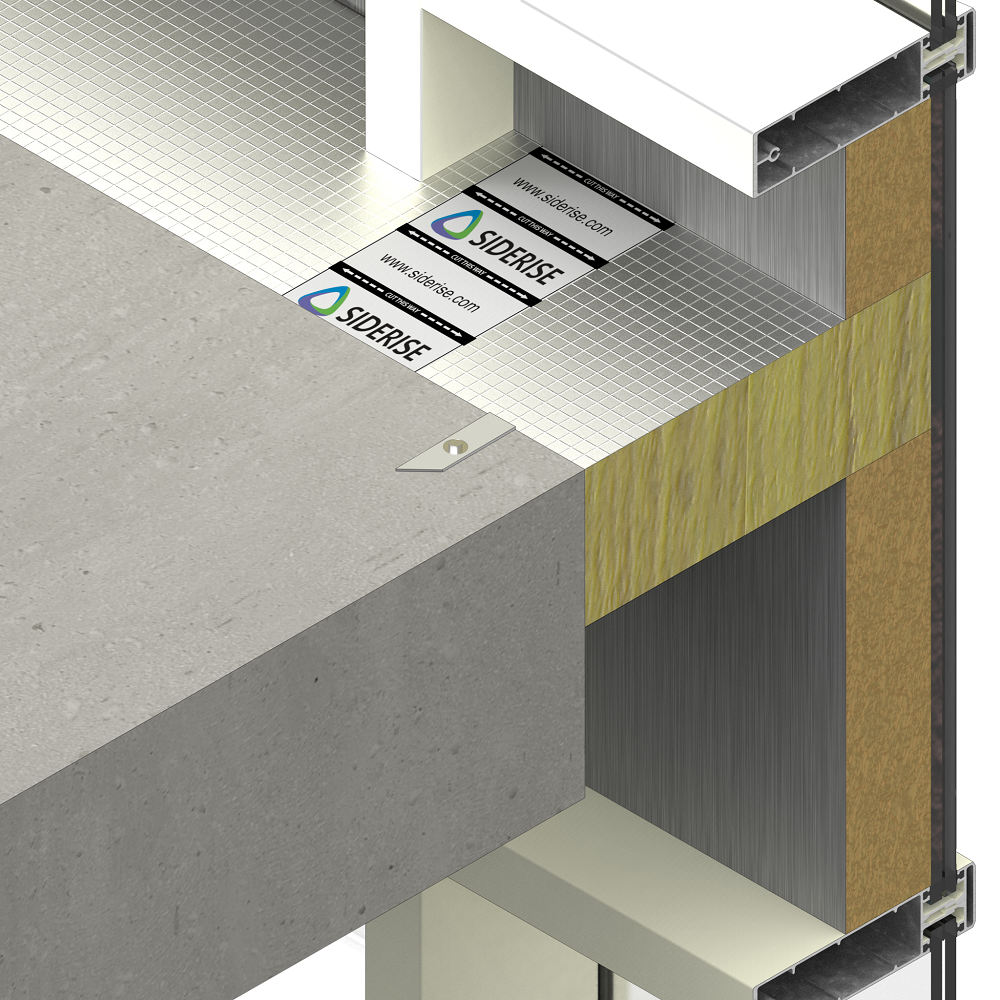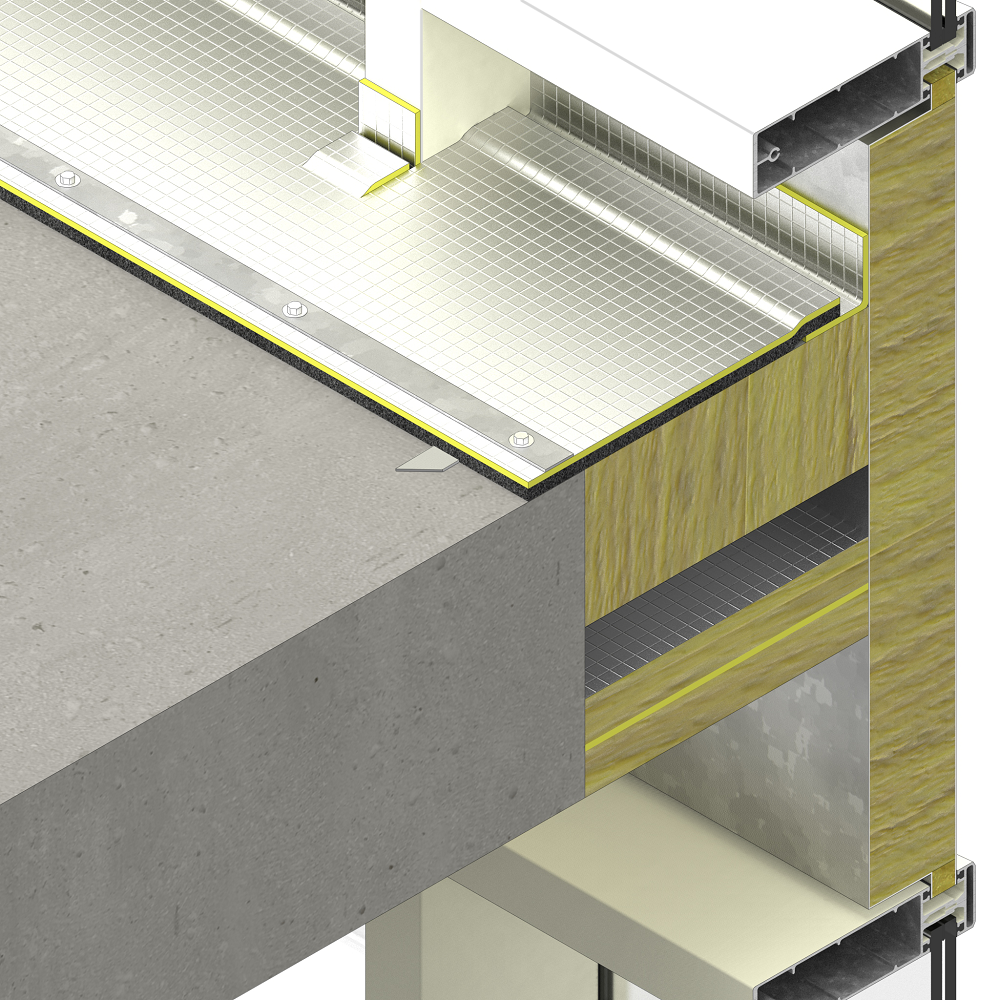- Case Studies
- Related Company
- prev
- next
Back
Case Study from:
Description
In a bid to handle the huge influx of people from rural areas, the skyscraper construction boom in India has gone on unabated since the ban on tall buildings was lifted in 2014. While this vertical building growth has seen the rise of curtain wall systems as an inherent and recognisable feature, it is critical these buildings be designed robustly. To meet the challenge, passive fire protection solutions are playing a vital role in these buildings, mitigating the effects of fire, saving lives and property. Sreenivas Nanayaran of SIDERISE feels that passive fire protection solutions such as firestops are crucial to prevent the passage of flames and noxious gases from one compartment floor or room to the next.
Fires in high-rise buildings can generate large quantities of smoke that tend to spread vertically throughout the building, even if the fire is contained to one room.
When the gap/cavity at perimeter edge between the floor and curtain wall is not properly sealed, flames and smoke can spread vertically to higher floors, and horizontally from one room to the next. Addressing these gaps/cavities by properly installing firestops maintains the floors’ fire compartmentation of the building. This delays vertical smoke-spread and reduces the risk of smoke-related injury in the upper floors of the building and adjacent rooms.
Sealing the gap
The perimeter barrier firestops seal the gap between the edge of the compartment floor slab and external curtain wall. Due to project designs and site tolerances, this linear gap can be variable, so the firestop system used needs to have a degree of ‘dynamic’ movement capability – compression and recovery – in order to accommodate serviceability movement, and more significant movement under fire load. It’s critical the firestop system does this in combination with the primary functional requirement, which is to maintain continuity of fire resistance between the compartment floor and the external wall. The installed firestop system needs to match the same period of fire resistance as the compartment floor.
All firestop systems need to be tested to two criteria – Integrity and Insulation (EI).
Integrity (E) refers to the ability of the system to prevent the passage of flame, smoke and combustible gases either through and around the material or through joints in an assembly; while Insulation (I) refers to a measure of the increase in conducted heat transferred from the exposed to unexposed surfaces of 180°C rises above ambient.
These two criteria are critical in the development of curtain wall perimeter firestop products. The most effective products combine a number of material features – density, thickness, resin content, fibre structure and controlled compression – which together determine the resistance properties.
When looking at the Integrity (E) criteria, the material chosen must be impervious to the transfer of flame and gases, easy to install with minimal site management and accommodate all real-world requirements at interfaces, joints and details.
In order to meet the fire and smoke stop requirements in all external façade applications, Siderise third party Certifire Approved perimeter barrier and firestop systems offer an unrivalled combination of fully-qualified performance, practical installation and service benefits.
The principal function of these systems is to maintain continuity of fire resistance by sealing the gap between the compartment floors or walls and external curtain walls horizontally and vertically.
These systems can offer tested fire rating options ranging from 30 minutes to five hours and accommodate void widths up to 1200mm. In addition to providing an effective seal against the passage of smoke and fire, the products will also function as an effective acoustic barrier and plenum lining.
Fire safe
The firestop should be installed under compression and must have test evidence to show that it is capable of accommodating movement of a façade. It is imperative that the installed seal is able to function effectively with due regard to all designed movement serviceability limits. Curtain walling and cladding façade systems will deflect due to positive and negative windloads as well as occupational live loads. These criteria are covered by EN 13116:2001.
Typically, a project may stipulate that the curtain walling system may have the following allowable deflection limits: Under the declared wind loads the maximum frontal deflection of the curtain walling’s framing members shall not exceed L/200 or 15mm, whichever is less, when measured between the points of support or anchorage to the building’s structure in compliance with EN 13116. (Extract from EN 138300) These factors may inevitably combine to preclude the suitability and therefore, use of certain systems e.g. high density material slab products.
Perimeter barriers must be installed to provide horizontal compartmentation at every floor level. Vertical cavity barriers should be provided as a minimum to fall in line with any compartment wall and more frequently if dictated by the fire strategy of the building.
Products should be fitted tightly around all bracketry to restrict the passage of smoke. Where there is potential for gaps, the product must be sealed with a sealant that carries the same fire insulation and integrity rating as the perimeter barrier.
All installations should be in accordance with manufacturers’ instructions and where fixing brackets are required these should be fitted and spaced in accordance with a certified fire test report.
Products used for fire safety installation should carry an independent third party certification in order to ensure that the product supplied is the same as that tested.
The gap between the slab edge and the façade is often a weak point acoustically. Any products used to improve the acoustic performance must not contribute to the fire load or inhibit the performance of the perimeter barrier.
Seal the voids
As part of the construction of One and Two Island City Center (ICC) towers in Dadar (EAST), Mumbai – reaching 64 floor and 72 floors respectively – the specification of a slab edge perimeter fire barrier will seal the void between the floor slab and the external curtain wall and vertical compartmentation between two different occupants.
With both vertical and horizontal fire compartmentation requirements on this fast-track project, the specification of SIDERISE CW-FS 120 firestops has provided the façade contractor Alumayer India Pvt Ltd and Alufit (India) Private Ltd with a solution that could maintain a fire and smoke seal in one product preventing the passage of flames and noxious gases passing from one floor to the next and also for vertical compartmentation.
For the two residential towers, the façade contractors installed circa 5000 LM of SIDERISE CW-FS 120 firestops including horizontal (floor slab) and vertical compartmentation. With the timeline on the project critical, the use of this dry fix system enabled the work to be completed quickly and efficiently, ready for handover to other subcontractors.
Throughout the application, SIDERISE is providing comprehensive support including drawing assistance, liaison with the authorities for approval, installation training and periodic site inspection and assistance through our local agents Allarch.
Whilst specifying the correct product is vital, the quality of installation is equally as important. Contractors installing life saving measures such as perimeter barriers and firestops must have adequate training on the particular manufacturer’s products and be qualified to install it in the first place. When it comes to saving lives and protecting businesses and property, a well designed and installed system can make the difference.
For further information about SIDERISE or for technical advice visit www.siderise.com or call 01656 730833









